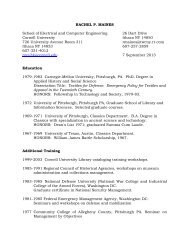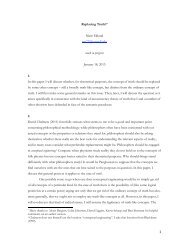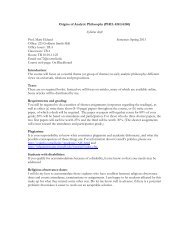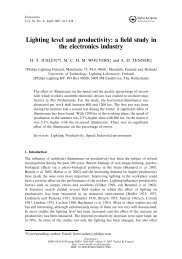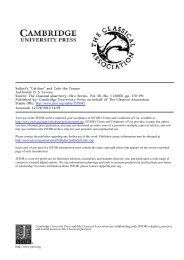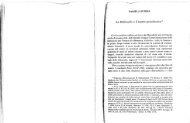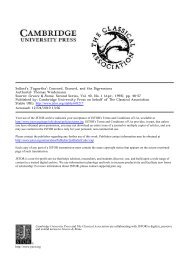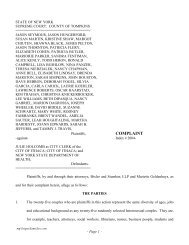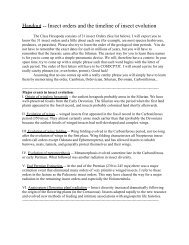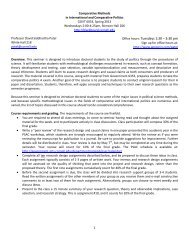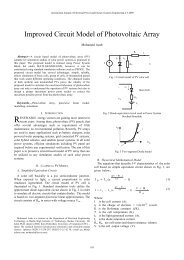LOCALLY STATIONARY VECTOR PROCESSES AND ADAPTIVE ...
LOCALLY STATIONARY VECTOR PROCESSES AND ADAPTIVE ...
LOCALLY STATIONARY VECTOR PROCESSES AND ADAPTIVE ...
You also want an ePaper? Increase the reach of your titles
YUMPU automatically turns print PDFs into web optimized ePapers that Google loves.
more general notion of costationarity. The components of X t<br />
are costationary if there exist “deterministic, complexity constrained<br />
sequences” {a t } and {b t } such that a t x 1,t + b t x 2,t<br />
is a stationary process. Unfortunately, unique solutions may<br />
not exist, and no procedure is currently available to identify<br />
which is best.<br />
2. MEASURING HOMOGENEITY<br />
Let Z 1 , . . . , Z T ∈ R d be a sequence of vector observations<br />
with E|Z t | 2 < ∞, ∀t. Let A and B denote two disjoint subsets<br />
of {Z t }, each with contiguous observations. Matteson<br />
and James [13] show that for independent sequences, a nonnegative<br />
divergence measure based on characteristic functions<br />
can be used to consistently estimate arbitrary changes in distribution.<br />
Here, we similarly propose measuring divergence<br />
in distribution with respect to empirical characteristic functions<br />
ˆφ. A first order divergence measure ̂D(A, B; α) is defined<br />
as<br />
∫R d | ˆφ A (s) − ˆφ B (s)| 2 (<br />
2π<br />
d<br />
2 Γ( 2−α<br />
2 )<br />
α2 α Γ( d+α<br />
2 ) |s|d+α ) −1<br />
ds, (3)<br />
for some α ∈ (0, 2). We use α = 1 in Section 3.<br />
This may easily be extended to higher orders by jointly<br />
considering lagged values of the process. For example, a second<br />
order measure considers two disjoint subsets of the process<br />
{(Z t, ′ Z t−1) ′ ′ } ∈ R 2d , evaluated analogously to Equation<br />
(3). When the observations within each subset are homogeneous,<br />
the first order measure may be used to test Equation (1)<br />
at a particular τ, for k = 1, while the second order measure<br />
simultaneously considers k = 1, 2.<br />
We apply this divergence measure to identify a window<br />
of homogeneity at time t by first dividing the series<br />
into K + 1 subsets, each of size δ ≥ 2, as follows: let<br />
A = {Z t−δ+1 , . . . , Z t } and, given a strictly increasing sequence<br />
{d i } ∈ N, let B i = {Z t−2δ+2−di , . . . , Z t−δ+1−di }.<br />
Here, A is disjoint from each B i , but the B i may not be<br />
disjoint. We then iteratively test for homogeneity between<br />
subsets A and B i for i = 1, 2, ..., K, as detailed in Section<br />
2.1. If the null hypothesis of homogeneity between<br />
A and B i is rejected, the procedure terminates and returns<br />
w t = max(δ, δ − 1 + d i ); otherwise, we increase to index<br />
i + 1 and repeat.<br />
2.1. Testing<br />
In this section we outline a testing procedure tailored for a<br />
bivariate series {X t } that is believed to be cointegrated locally.<br />
We first assume that at time t the local cointegration<br />
conditions hold for the interval [t − δ + 1, t], such that both<br />
Z t = ∆X t and u t = x 1t − βx 2t are stationary. Here, β is<br />
estimated using ordinary least squares (OLS) over this interval,<br />
as discussed in Section 3. We now construct the subset A<br />
of {Z t }, as in the previous section, and analogously construct<br />
a subset C of {u t }. Similarly, we construct the subsets B i<br />
of {Z t }, as well as corresponding subsets D i of {u t }. Note<br />
that the subsets D i are based on the original estimate of β.<br />
Finally, we define a joint test statistic as<br />
̂D i = ̂D(A, B i ; α) + ̂D(C, D i ; α). (4)<br />
̂D<br />
(r)<br />
i<br />
The distribution of ̂D i under the dual homogeneity null<br />
hypothesis is unknown; we propose to approximate it via simulation.<br />
We consider the serial dependence of Z t and u t via<br />
a VAR(1) and AR(1) model, respectively. We estimate the<br />
mean and variance parameters for each sequence via OLS, using<br />
the subsets A and C, respectively. Based on these parameter<br />
estimates, we generate new sequences {Zt ∗ } and {u ∗ t },<br />
with normally distributed errors. The series are initialized at<br />
Zt−2δ+2−d ∗ i<br />
= Z t−2δ+2−di and u ∗ t−2δ+2−d i<br />
= u t−2δ+2−di .<br />
This is repeated R times, and for the rth simulation, we calculate<br />
= ̂D(A ∗ , Bi ∗; α) + ̂D(C ∗ , Di ∗ ; α), analogous to<br />
Equation (4). Finally, we calculate an approximate p-value<br />
for ̂D i as #{r : ̂D i ≤ }/R.<br />
̂D<br />
(r)<br />
i<br />
3. APPLICATION<br />
We apply the proposed adaptive window estimation method<br />
to potentially cointegrated stocks prices. We consider the<br />
adjusted daily closing stock prices for Coca-Cola (KO) and<br />
Pepsi (PEP), Hewlett-Packard (HPQ) and Dell (DELL), Wal-<br />
Mart (WMT) and Target (TGT), and Chevron (CVX) and<br />
Exxon Mobil (XOM). For each of these pairs we perform<br />
analysis for the time period January 2007 through November<br />
2012. The adjusted daily closing prices are shown in<br />
Figures 1(a) and 2(a)(b)(c), respectively. We use δ = 30,<br />
d i = i, R = 100 and 0.10 as the significance level for our<br />
testing. When applied iteratively, the significance level only<br />
corresponds to the individual marginal tests.<br />
We used OLS to perform our procedure instead of the<br />
maximum likelihood method of Johansen [14] due to the latter’s<br />
irregular finite sample properties. Phillips [15] remarks<br />
that in small samples, the maximum likelihood estimator of<br />
the cointegrating vector has no finite moments, which can<br />
lead to extremely large cointegration coefficients.<br />
For each pair, we perform our estimation procedure over<br />
each locally stationary window estimate [t − w t , t], shown in<br />
Figures 1(b) and 2(d)(e)(f). For the KO-PEP pair, the values<br />
of the local cointegrating coefficient ˆβ(t, w t ), an estimate<br />
over a fixed window length ˆβ(t, ¯w = 68), as well as a cumulative<br />
window ˆβ t with [1, t], are shown in Figure 1(c).<br />
We perform a Dickey Fuller test to provide an additional<br />
check that the cointegrating vector produces an I(0) process.<br />
As stated in Zivot [16], the Dickey Fuller test examines the<br />
cointegrated series {û t } and tests the hypotheses H 0 : û t ∼<br />
I(1) versus H 1 : û t ∼ I(0). It should be noted since the test



